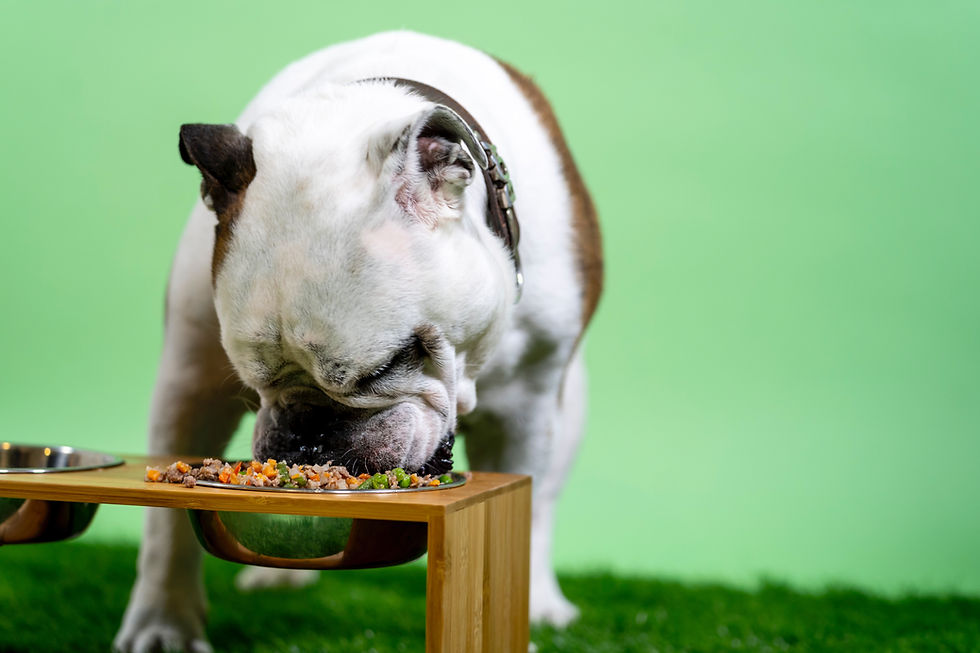What does Chrondrodystrophic mean and how does it affect our dog training and behaviour responses when working with dogs who are prone to this condition?
- Amanda Anderson - K9 Hydrotherapist

- Aug 5, 2024
- 2 min read
What is it?
Chondrodystrophic refers to a genetic condition affecting the development of cartilage and bones, leading to shortened limbs and a distinctive body shape. This condition is commonly seen in certain dog breeds like Dachshunds, Basset Hounds, Corgis, English and French Bulldogs, characterised by disproportionately short limbs compared to the size of their bodies. The genetic mutation associated with chondrodystrophy can also predispose these breeds to Intervertebral Disc Disease (IVDD), a spinal condition that can lead to pain, mobility issues, and even paralysis.

Impact on Dog Training and Behaviour Responses
Chondrodystrophic dogs may experience specific physical limitations and health issues that can influence their training and behaviour. For instance, due to their unique body structure, these dogs might have difficulty performing certain physical activities or commands, such as jumping or sitting for extended periods. This requires our trainers to adapt their methods to accommodate a dog's physical capabilities, ensuring that exercises are safe and comfortable.
Furthermore, the risk of IVDD means that chondrodystrophic dogs might experience pain or discomfort, which can affect their behaviour. Pain can lead to increased irritability, reluctance to engage in activities, or even aggressive displays if a dog feels threatened or unable to escape a situation.
Our Dog Trainers and their guardians of these breeds must be vigilant in recognising signs of discomfort and avoid activities that could exacerbate any underlying conditions.

Understanding the unique needs of chondrodystrophic dogs is essential in us creating a suitable training plan that fosters positive behaviour and minimises stress or discomfort. By tailoring our training approaches to suit our 4 legged clients' physical limitations and potential health issues, our trainers can help these dogs thrive and maintain a positive and enjoyable training journey with us.
Our Trainers and their owners must be particularly attentive to the signs of discomfort in these dogs. Subtle cues, such as a change in posture, vocalisations like whining or growling, or a refusal to follow cues, can indicate that the dog is experiencing pain. It's crucial to avoid any training techniques or activities that could aggravate their condition, such as rough handling, exercises that require jumping or twisting, or prolonged periods of sitting or standing in uncomfortable positions.

Balanced reinforcement and gentle handling are key strategies in training chondrodystrophic dogs. These methods help build trust and encourage the dogs we work with to participate willingly in training sessions. Using treats, praise, and gentle encouragement together with positive marking can help ensure that a dog associates training with positive experiences. Additionally, our trainers will use slow, deliberate movements to avoid startling a dog, as sudden actions can cause anxiety or fear in a dog that is already experiencing discomfort.
Understanding the unique needs of chondrodystrophic dogs is essential for developing a training plan that promotes positive behaviour while minimising stress and discomfort. Tailoring the training approach to accommodate the dog's physical limitations and health issues ensures that the dog remains comfortable and engaged. This may include adapting exercises to be less physically demanding, using low-impact activities, or incorporating frequent breaks to prevent fatigue. By carefully managing these factors, trainers can help chondrodystrophic dogs maintain a positive outlook on training, improving their quality of life and fostering a strong bond between the dog and their owner.




Comments